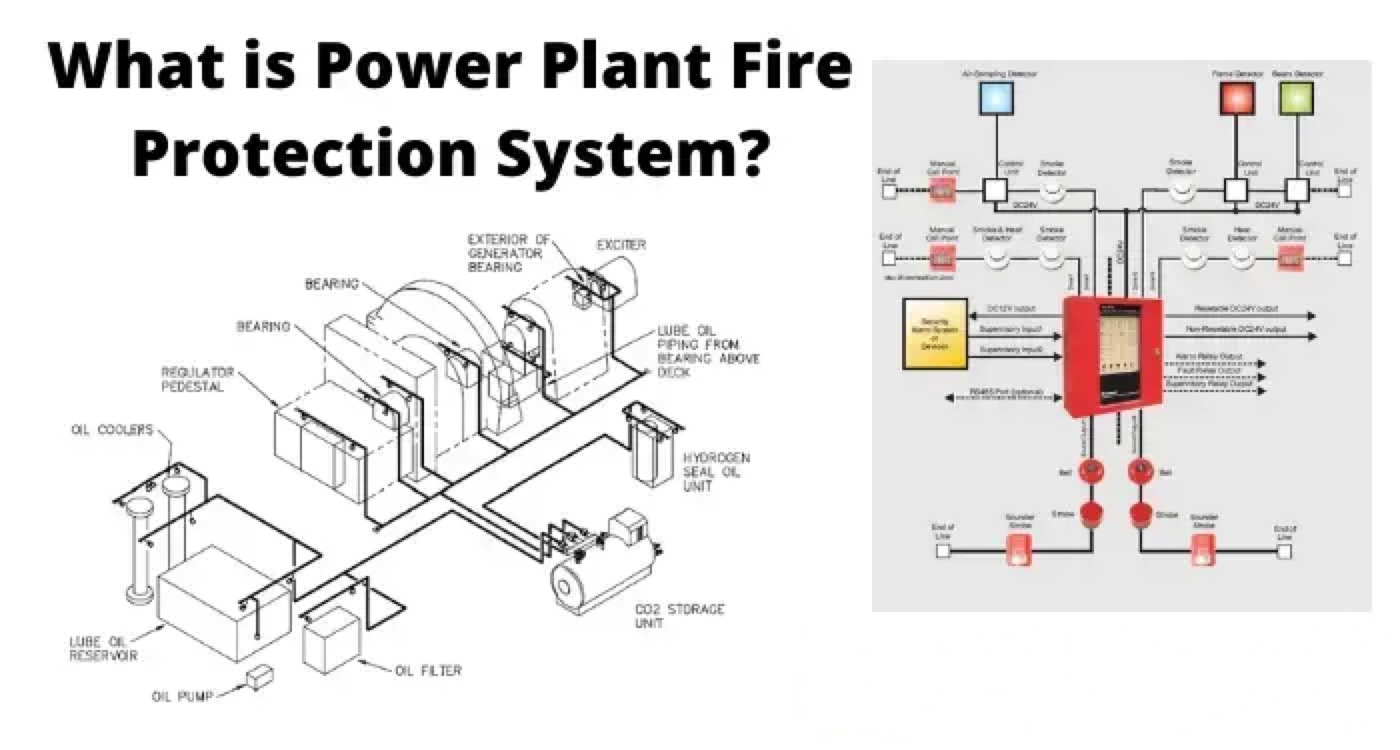Power Plant Fire Protection System

With the advent of industrialization the demand for power is also on the surge like never before. But augmenting without giving the due consideration for Fire protection and detection system would be detrimental and should not be done.
Thermal Power Plants are classified under the ordinary Hazard Occupancy as per Tariff Advisory Committee (TAC) of India. The design and installation of complete fire protection system shall comply with the regulations of TAC. In the absence of TAC regulations, the National Fire Protection Association (NFPA) standard shall be adopted. The system should be designed in such a manner that it is acceptable to approving statutory body (like TAC) for insurance companies of India and enable an owner to obtain the maximum rebate on its insurance premium.
Thermal Power Plants are characterized by their complex overall system made of a range of different operating modules. In addition to these conditions such as extremely hot surfaces, lubricating oils and coal and coal dust pose huge fire risks. Elements of Fire Protection System is covered in this Portion of Part-I.
This section comprises of following which broadly are the elements of the fire protection system:
Fire Water Reservoir or Fire water Pump House
Water pump house plays an important role in fire protection system, so the complete fire pump arrangement shall be in line with the requirements of TAC. Water storage tank is required for storage of water and water will be drawn as and when required for fire protection. All the fire pumps should work automatically by use of Pressure switches; however stopping of all the fire pumps shall be manual only.
The possible sources of supply of water to storage tank will be from two different sources:
From raw water pump discharge header.
From CW blow down the system.
The fire water storage tank shall be provided with two equal compartments and both the compartments shall be interconnected through separate isolation valve and each compartment shall be connected to a common suction header of fire water pumps so that any fire pump can be fed by either fire water storage compartment as per TAC regulations.
At least two (2) headers shall be taken out of pump house for making loops around various risks. Each loop shall be interconnected for better reliability of the system. To isolate the system due to damage/repair, suitable nos. of gate valve should be provided.
Pumps Installed in Fire Water Pump House
Dedicated fire water pumps shall be provided for the fire hydrant and spray system. Blind flange with valve connection for future expansion shall be provided in the fire hydrant and spray system network. The installed fire water pump capacity and head shall be designed as per system requirement/TAC recommendations.
Following are the fire water pumps installed in the fire water pump house:
Electric motor driven main fire water pump.
Diesel engine driven pumps
All diesel engine driven pumps shall be provided with 2 × 100% battery chargers and batteries.
Electric motor driven fire water jockey pumps (one working and one stand by).
Air compressor for pressurizing hydro-pneumatic tank.
Fire Water Pumps Data Sheet
For selection of rated capacity, rpm and material construction are:
1.4 |
TAC approval required |
yes |
yes |
yes |
1.5 |
Used for service like |
Hydrant and spray system |
Hydrant and spray system |
Common for Hydrant and spray system |
2.0 |
Material of construction |
|||
2.1 |
Casing |
SS304 |
SS304 |
SS304 |
2.2 |
Impeller |
Stainless steel |
Stainless steel |
Stainless steel |
2.3 |
Shaft |
Stainless steel |
Stainless steel |
Stainless steel |
Control and operating philosophy
Fire water ring main network shall be a pressurized system provided with automatic starting of fire water pumps. The mode of operation of fire water pumping system for following shall be described in Part-II and III.
Hydrant and MVWSS
Hydrant and HVWSS
Fixed Foam system
Fire water booster pump
Constructional requirements
All hydrant, spray and foam system pipe mains/pipes shall be routed above ground on top of the concrete pedestals at regular intervals.
In main plant area and coal stock yard area pipe lines shall be routed in RCC pipe trenches filled with sand and covered with pre-cast RCC removable covers. Pipe trenches crossing through road or rail shall be through Hume pipes.
Fire water pipes shall be of carbon steel conforming to IS:1239 (medium grade) and IS:3589.
All above ground piping shall be adequately supported by concrete pedestals at regular intervals.
All buried pipes shall be double coated and wrapped as per IS:10221 or IS:15337.
The entire pipe net work shall be hydraulically designed in such manner that the velocity of water in any section does not exceed 5.0 m/sec.
Fire pump pressure has to be decided in such a manner that the requirement of the highest pressure at the remotest and highest hydrant can be meet at the same time in line with the TAC requirements.
Hose cabinet shall be provided with 16 SWG thick body and 3 mm glass. The hose shall be provided with key box and pedestal. Fire hose shall be of IS 636 type-A.
Hydrant System
(is covered in part-II)
Spray System
(is covered in part-II)
Fix Foam system
(is covered in part-III)
Potable and mobile extinguisher
(is covered in part-III)
Statement: Respect the original, good articles worth sharing, if there is infringement please contact delete.
Electrical4U is dedicated to the teaching and sharing of all things related to electrical and electronics engineering.













